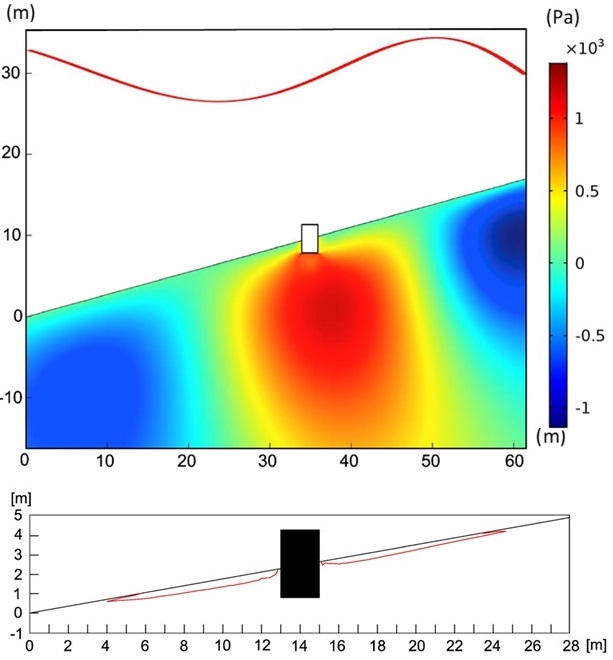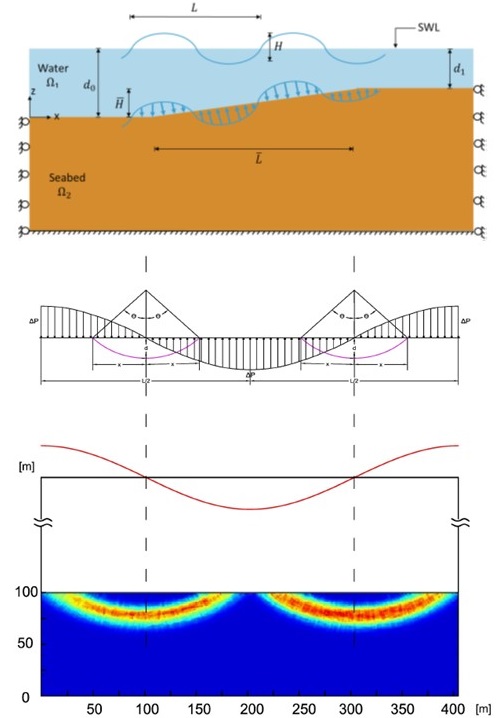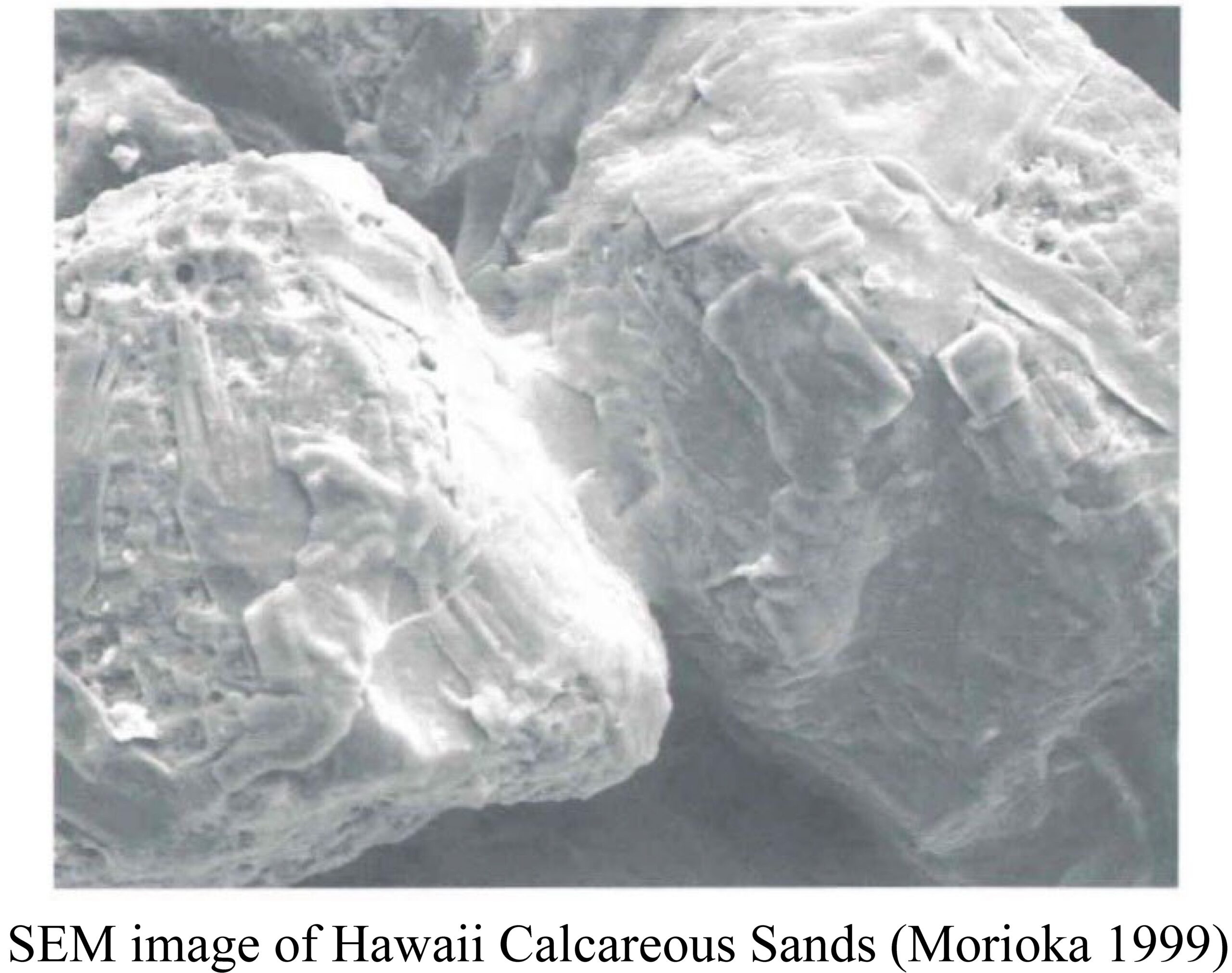Research
Research Thrusts:
The necessity for sustainability and resiliency of built environments has now become more tangible considering the increasing global demand for energy and the damaging impacts of climate change. In such conditions, innovative solutions for effective exploitation of renewable energy resources and design of resilient engineering systems are vital. To address the mentioned issues, in my research works, I investigate the fundamental behavior of soils in order to build stable foundations for ocean renewable energy devices (e.g., wave energy converters and offshore wind turbines) and to avoid catastrophic failures of geosystems resulting from soil instabilities during extreme events such as storms and earthquakes.

Research Project Highlights
Wave-Induced Momentary Liquefaction around Marine Hydrokinetic Devices Considering Fluid-Soil-Structure Interactions
Wave-induced liquefaction in seabed may adversely impact the stability and bearing capacity of the foundation elements of coastal structures. The interaction of wave, seabed, and structure has been studied mostly for only mildly sloping seabed (< 5°) using a decoupled approach. However, some of the marine hydrokinetic devices (MHKs) may be built on or anchored to the seabed with significant steepness. In this project, the wave-induced response and instantaneous liquefaction within sloping seabed supporting a small structure (representing a small MHK device) are evaluated herein by developing an almost fully coupled finite element model. The results indicate that the decoupled solution yields significantly larger stresses and liquefaction zones around the structure. The seabed response and the liquefaction zones become smaller for steeper slopes. The presence of liquefied zones brings the stress state closer to the failure envelope, reduces the confining stresses, and induces larger plastic strains around the foundation element.

Response and Instability of Poro-elastoplastic Cohesionless Soils Under Partially Undrained Cyclic Loading
In this project, a coupled numerical framework and a set of centrifuge experiments are developed to evaluate the interaction of waves, structures, and seabed considering nonlinear cyclic behavior of contractant sandy soils. For computational modeling, Permanent Strain Model is employed for concurrent simulation of nonlinear buildup of pore pressure and deformation of saturated sand subjected to the cyclic loadings. The model (in elemental scale) is incorporated into a finite element code to solve the interaction of wave and seabed. The numerical framework is verified against results of cyclic triaxial compression tests and analytical solutions. Parametric studies are conducted to evaluate the effects of wave characteristics on triggering the residual liquefaction. The numerical results indicate good agreements with experimental measures. The results also show that for large waves, the progressive buildup of pore pressure in sediments may become high enough, leading to residual liquefaction.

Seabed Stabilization against Soil Liquefaction around Marine Structures using Geotextile Sand Containers
The impact of wave-induced liquefaction (instantaneous or residual) on marine structures have been widely recognized. Presence of liquefied soils with low shear strength around MHK foundation system may cause bearing capacity failure and sediment mobilization (scour and accretion). In this project, heavy Geotextile Sand Containers, as environmentally-friendly protection elements, are placed near the MHK structure, and their performance to mitigate soil liquefaction is investigated. The benefits of such mitigation measures are two-fold including reduction of energy of impinging waves and generation of anisotropic geostatic stresses within the vicinity of the MHK structure.

Submarine Landslides in Nearly Saturated Sediments under Cyclic Loadings
Evaluation of wave impacts on submarine landslides is an essential element in geohazard studies. The slight desaturation of sediments (due to dissociation of gas hydrates) has been found to adversely impact the slide of the sloping seabed in the Fraser River Delta in Canada. In this project, to investigate the role of wave action on the slide of partially saturated seabed slopes, an integrated coupled-flow-and-deformation FEM model is developed. The limitation of limit equilibrium methods in the evaluation of submarine landslides is evaluated through comparison with SRFEM analyses where partly-dynamic and quasistatic idealizations of seabed response are considered.

Cyclic and Liquefaction Behavior of Calcareous Soils under Seismic Waves
Calcareous soils, prevalent in many coastal areas, pose unique challenges due to their susceptibility to liquefaction and instability under water waves and seismic loadings.The aim of this research project is to characterize the response of these problematic soils using advanced in situ and laboratory testing.
